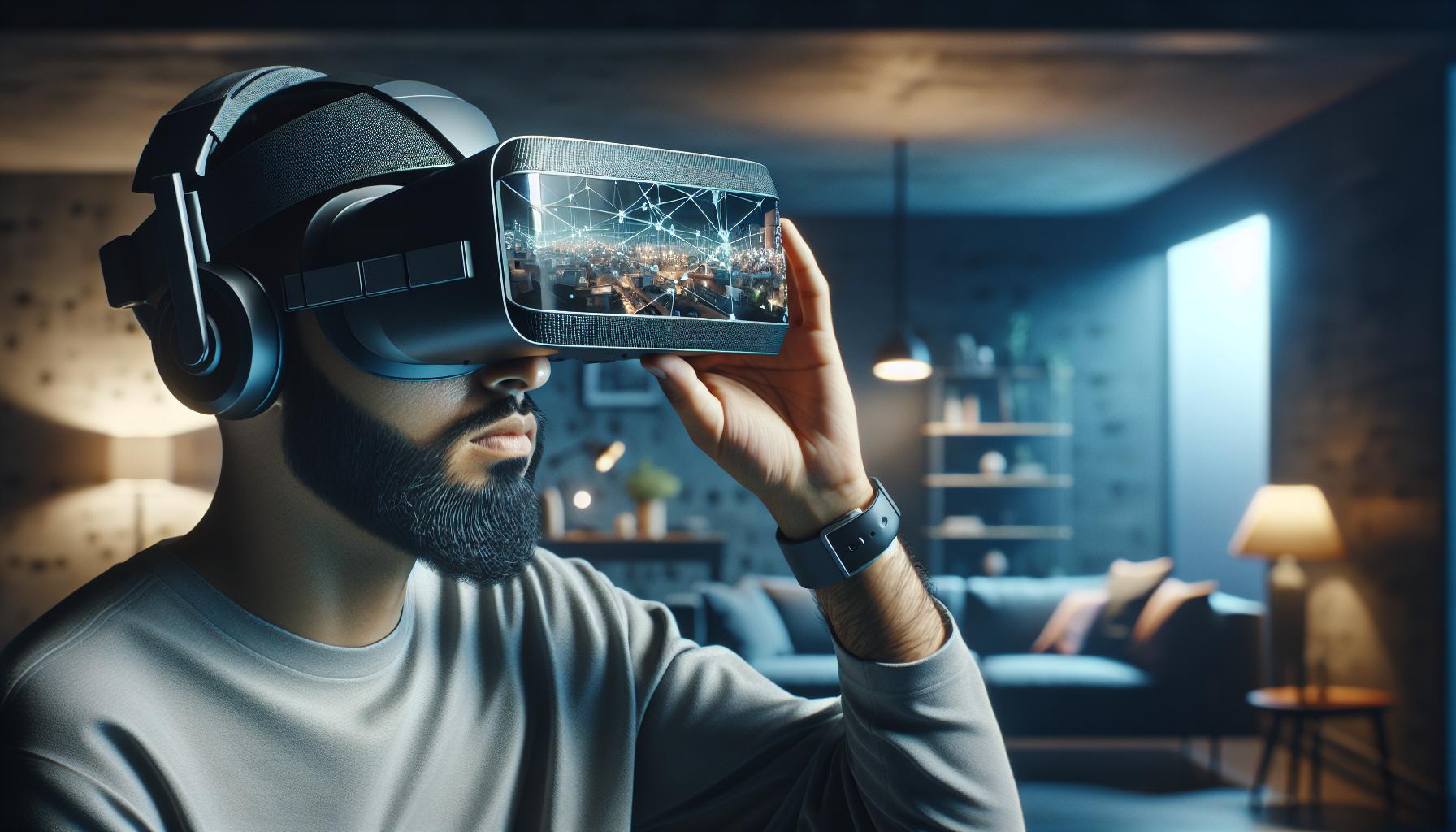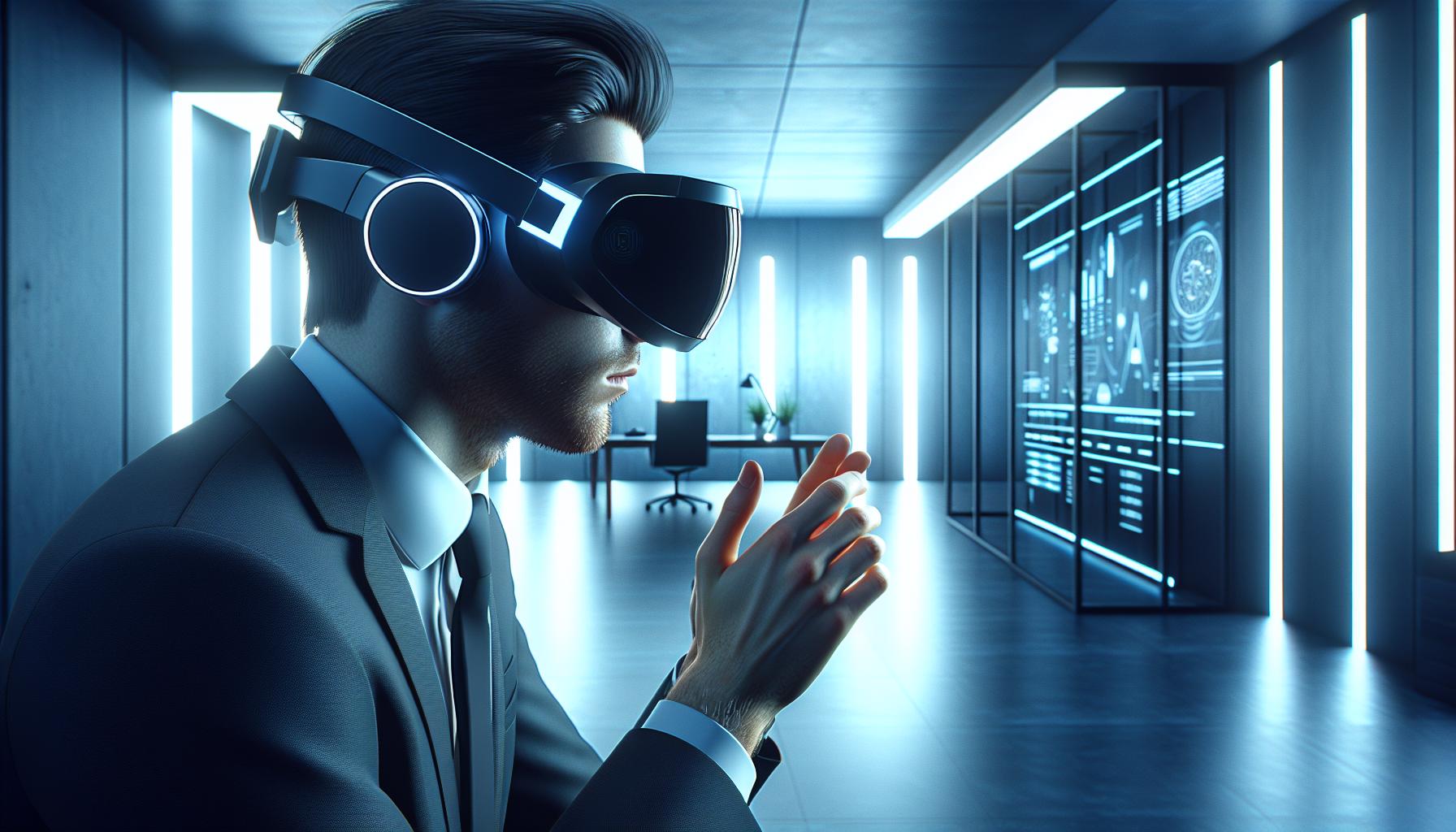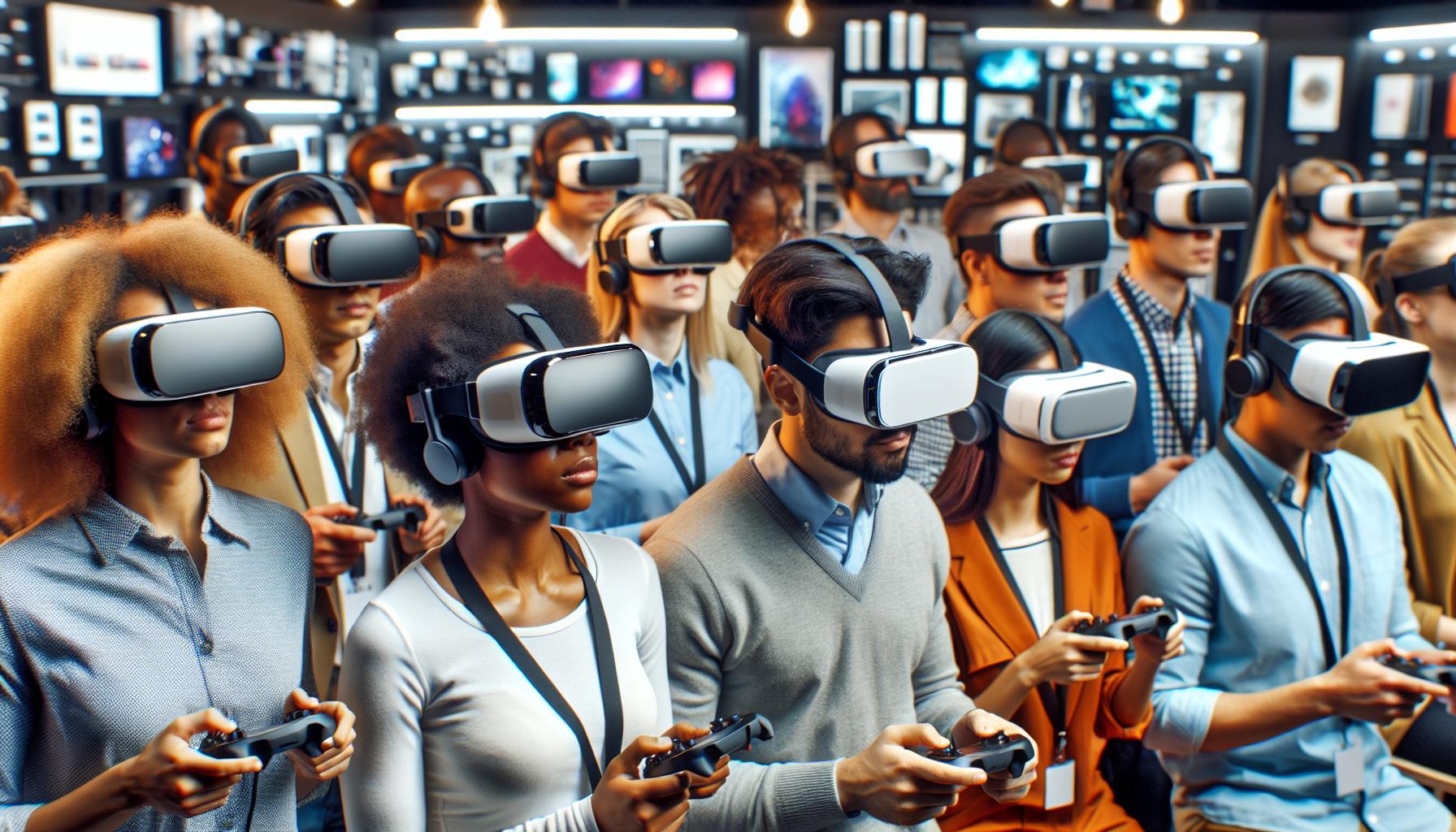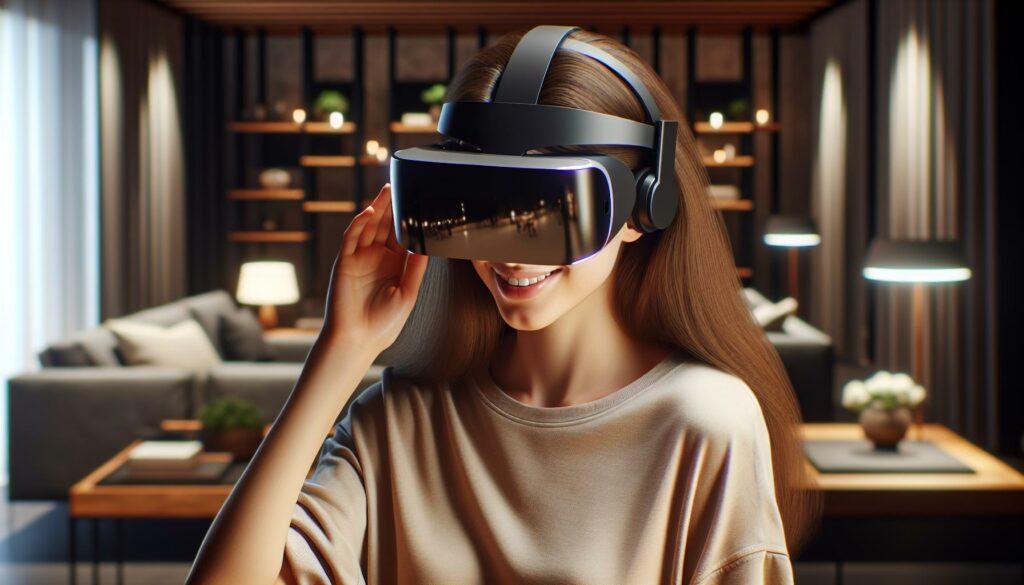Ever wondered what it’s like to have a mini-theater strapped to your face? Head-mounted devices (HMDs) are revolutionizing how we experience digital content bringing virtual worlds right before our eyes. From gaming enthusiasts to medical professionals these wearable displays are transforming industries faster than you can say “virtual reality.”
These high-tech headsets have come a long way since their clunky predecessors. Today’s HMDs pack powerful processors stunning displays and advanced motion tracking into increasingly sleek and comfortable designs. Whether it’s exploring virtual landscapes conducting remote surgery or training in simulated environments these devices are pushing the boundaries of what’s possible in human-computer interaction.
Head Mounted Device
A head mounted device (HMD) consists of a wearable display system positioned directly in front of the eyes. HMDs integrate advanced optical components with miniature displays to create an immersive visual experience for users.
The core components of an HMD include:
- Microdisplays: High resolution OLED or LCD screens that project images
- Optical lenses: Elements that focus imagery at the proper viewing distance
- Motion sensors: Accelerometers gyroscopes that track head movement
- Processing units: Chips that handle graphics rendering computational tasks
- Audio systems: Integrated speakers or headphones for 3D sound
Modern HMDs feature essential specifications that define their capabilities:
| Specification | Typical Range |
|---|---|
| Resolution | 1920×1080 to 2160×2160 per eye |
| Field of View | 90° to 120° |
| Refresh Rate | 90 Hz to 144 Hz |
| Weight | 300g to 600g |
HMDs operate in two primary modes:
- Virtual Reality (VR): Creates fully immersive digital environments blocking out the physical world
- Augmented Reality (AR): Overlays digital content onto the real world through transparent displays
The technology serves multiple sectors including:
- Gaming entertainment platforms
- Medical training simulations
- Industrial design visualization
- Military combat training
- Educational virtual classrooms
- Remote collaboration tools
These devices connect to external computing systems through wireless protocols or direct cable connections. Advanced models incorporate inside out tracking cameras object recognition sensors eye tracking capabilities facial expression detection.
Types of Head Mounted Displays

Head mounted displays come in three distinct categories, each designed for specific applications based on how users interact with digital content.
Virtual Reality (VR) Headsets
VR headsets create fully immersive digital environments by completely blocking the user’s view of the physical world. Modern VR devices include standalone headsets like Meta Quest 3 with built-in processors for wireless operation. Premium tethered headsets such as Valve Index connect to PCs for enhanced graphics performance. Key features include 6DOF tracking systems that monitor head position in 3D space. Display resolutions range from 1832 x 1920 pixels per eye in basic models to 2880 x 2880 pixels in premium versions. Advanced models incorporate haptic feedback controllers for enhanced interaction.
Augmented Reality (AR) Displays
AR displays overlay digital elements onto the real world through transparent or pass-through displays. Leading examples include Microsoft HoloLens 2 which projects holograms into the user’s field of view. These devices use waveguide optics to reflect light directly into the eyes. Essential components include depth sensors for environmental mapping. Field of view specifications span 43 degrees in entry-level models to 90 degrees in advanced systems. Enterprise AR headsets feature gesture recognition cameras enabling hands-free operation.
Mixed Reality (MR) Systems
MR systems blend virtual objects with the physical environment using advanced environmental tracking. Popular models like Magic Leap 2 incorporate spatial mapping technology to anchor digital content. These devices feature eye tracking sensors that adjust rendering based on gaze direction. Processing units handle real-time occlusion allowing virtual objects to appear behind physical ones. Display technology includes micro OLED panels delivering 120Hz refresh rates. Advanced spatial audio systems create directional sound cues matching visual elements.
Key Components and Technology

Head mounted devices integrate advanced hardware components to create immersive digital experiences. These components work together to deliver realistic visuals enhanced tracking capabilities seamless audio integration.
Display Systems
Modern HMDs utilize high-resolution OLED or LCD microdisplays with resolutions reaching 4K per eye. These displays incorporate specialized optics including fresnel lenses custom waveguides to direct light toward users’ eyes. Advanced models feature refresh rates of up to 120Hz reducing motion blur improving visual comfort. Dual display configurations create stereoscopic 3D images providing depth perception realistic spatial awareness. Field of view ranges extend from 90 to 120 degrees horizontally matching human peripheral vision capabilities.
Motion Tracking Sensors
Advanced motion tracking systems employ multiple sensor types for precise movement detection. Inertial Measurement Units (IMUs) combine accelerometers gyroscopes magnetometers to track rotational movements. Inside-out tracking cameras map surroundings detect position changes with sub-millimeter accuracy. Infrared sensors enable hand gesture recognition room-scale positioning. Advanced eye tracking systems monitor pupil movement enabling foveated rendering dynamic focus adjustment.
Audio Components
Spatial audio systems create immersive 3D soundscapes enhancing virtual environments. Integrated headphones deliver binaural audio with precise positional tracking. Microphone arrays enable voice commands support noise cancellation features. Advanced models incorporate bone conduction technology providing audio without covering ears. Built-in digital signal processors handle real-time audio processing delivering low-latency sound output. Custom acoustic chambers optimize sound quality while maintaining device ergonomics.
Popular Head Mounted Devices in the Market

The current market offers diverse head-mounted devices tailored for specific use cases. Leading manufacturers create specialized HMDs with unique features that cater to different user requirements.
Consumer Entertainment Devices
Meta Quest 3 dominates the consumer VR market with its standalone capabilities, advanced resolution of 2064 x 2208 pixels per eye, and 110-degree field of view. The PlayStation VR2 integrates with PS5 consoles, featuring 4K HDR displays, eye tracking, and haptic feedback for immersive gaming experiences. Valve Index stands out in PC VR with its 144Hz refresh rate displays, precise finger tracking controllers, and expansive 130-degree field of view. HTC Vive Pro 2 delivers professional-grade visuals with 5K resolution, 120-degree FOV, and compatibility with SteamVR tracking system.
Enterprise and Industrial Applications
Microsoft HoloLens 2 leads enterprise AR solutions with its advanced gesture recognition, 52-degree field of view, and enterprise-focused applications for remote collaboration, training, and design. The Magic Leap 2 offers superior optics with dynamic dimming technology, 70-degree FOV, and custom AMD processors for industrial visualization. Google Glass Enterprise Edition 2 provides hands-free computing with an 8MP camera, voice commands, and lightweight design for workplace efficiency. RealWear HMT-1 excels in industrial environments with its rugged design, noise-canceling microphones, and voice-activated interface for maintenance, inspection, and remote expert guidance.
Benefits and Use Cases
Head mounted devices deliver transformative advantages across multiple sectors, combining immersive experiences with practical applications. Each use case leverages unique HMD capabilities to enhance user engagement and operational efficiency.
Gaming and Entertainment
HMDs revolutionize gaming by creating fully immersive virtual environments where players interact naturally with digital content. Games like Beat Saber demonstrate 360-degree movement tracking for precise rhythm-based gameplay while titles such as Half-Life: Alyx showcase realistic physics interactions. VR social platforms including VRChat connect users in shared virtual spaces enabling avatar-based communication. Cinematic experiences through platforms like Bigscreen VR transform personal viewing into theater-scale entertainment complete with spatial audio integration.
Training and Education
Educational institutions leverage HMDs to create interactive learning environments that improve knowledge retention by 75%. Medical students practice surgical procedures in risk-free virtual settings while engineering students manipulate 3D models to understand complex mechanical systems. Corporate training programs utilize AR overlays to guide employees through maintenance procedures reducing training time by 40%. Virtual field trips transport students to historical sites museums space stations enabling experiential learning opportunities previously impossible in traditional classrooms.
Healthcare Applications
Medical professionals employ HMDs to enhance patient care through advanced visualization techniques. Surgeons access real-time imaging data during procedures using AR overlays displaying vital signs patient information 3D anatomical models. Mental health practitioners conduct exposure therapy sessions in controlled virtual environments treating conditions like PTSD phobias anxiety disorders. Rehabilitation programs incorporate VR exercises tracking patient progress through measurable metrics helping stroke victims regain motor functions. Remote consultation platforms enable specialists to guide procedures from anywhere providing expertise to underserved regions.
Limitations and Challenges
Head-mounted devices face several technological obstacles which affect their widespread adoption. These challenges range from hardware limitations to user experience concerns.
Technical Constraints
Current HMD technology encounters significant processing power limitations that impact real-time rendering performance. High-resolution displays demand substantial computational resources, leading to reduced battery life in wireless models. The field of view remains restricted to 90-120 degrees in most devices, compared to human peripheral vision of 180 degrees. Display technology struggles with the screen-door effect, where users see visible gaps between pixels. Latency issues between head movement detection creates motion tracking delays of 5-20 milliseconds, potentially causing disorientation. Limited bandwidth in wireless models restricts data transmission to 150-300 Mbps, affecting streaming quality for high-fidelity content.
User Comfort and Safety
Extended HMD use creates physical discomfort through the distribution of 300-900 grams of weight on facial structures. Eye strain emerges after 30-45 minutes of continuous use due to vergence-accommodation conflict. Motion sickness affects 40-70% of users during rapid movement scenarios in virtual environments. Heat generation from processing units raises device temperature to 35-40°C, creating discomfort during extended sessions. Physical isolation from surroundings increases accident risks in non-controlled environments. Light leakage around the facial interface reduces immersion quality for users with diverse facial structures.
Future of Head Mounted Technology
Emerging advancements in head mounted technology point to revolutionary changes in display resolution, tracking accuracy, and form factor design. Miniaturization of components enables manufacturers to create lighter, more comfortable devices that resemble standard eyewear. Advanced micro OLED displays achieve resolutions exceeding 4K per eye with minimal power consumption.
Next generation tracking systems incorporate artificial intelligence to predict user movements with sub-millimeter precision. Eye tracking technology enables foveated rendering, focusing processing power on areas where users look directly. Neural interfaces integrate brain computer interaction capabilities for hands free control of device functions.
Key developments include:
- Holographic waveguides replacing traditional optics for wider fields of view
- Haptic feedback systems providing tactile sensations
- 5G connectivity enabling cloud rendered content streaming
- Passthrough cameras delivering photorealistic mixed reality
- Battery innovations extending usage time to 8+ hours
Market projections indicate significant growth:
| Year | Market Size (USD) | Units Shipped |
|---|---|---|
| 2025 | $92.1 billion | 43.5 million |
| 2030 | $283.4 billion | 112.6 million |
Enterprise applications drive adoption through remote collaboration tools, training simulations, and data visualization platforms. Consumer entertainment expands beyond gaming into social experiences, virtual tourism, and interactive media consumption. Medical applications advance through surgical navigation systems, therapeutic tools, and diagnostic visualization aids.
Contextual awareness systems enable devices to understand environments, object positions, and user interactions in real time. Social features integrate facial expression tracking, eye contact detection, and gesture recognition for natural communication in virtual spaces.
Digital Content Tool
Head-mounted devices represent a groundbreaking shift in how we interact with digital content. From gaming and entertainment to healthcare and education these innovative devices continue to push the boundaries of human-computer interaction.
While challenges like user comfort and technical limitations persist the future of HMD technology looks promising. Advances in display technology motion tracking and form factor design point toward a future where these devices will become as commonplace as smartphones.
As the technology matures and becomes more accessible HMDs will likely play an increasingly vital role in shaping how we work learn and connect with others in our increasingly digital world.

